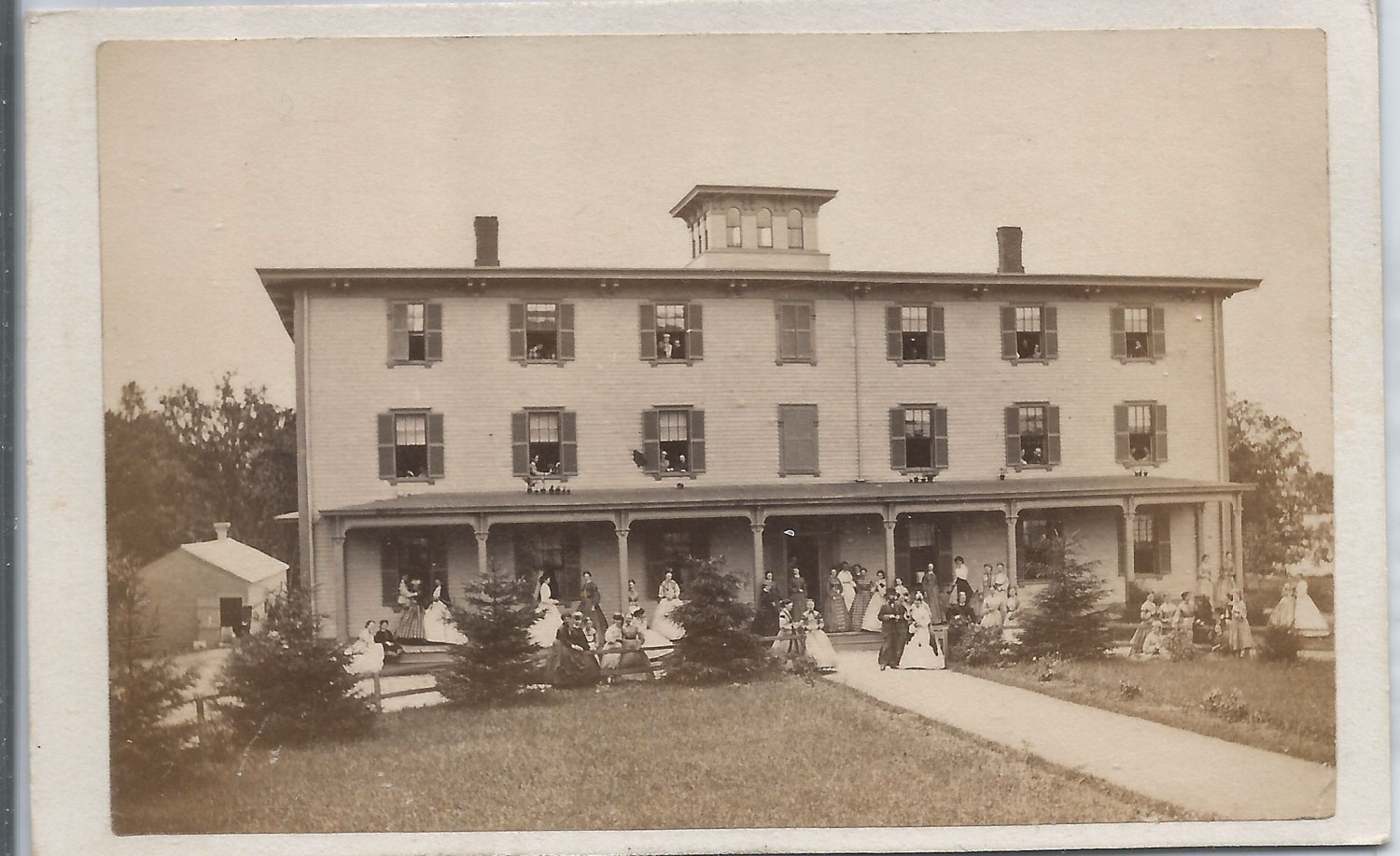September 9, 1837: Mt. Holyoke Female Seminary Opens
You are there: When Mary Lyon opens her Mt. Holyoke Female Seminary, the movement toward educating women and achieving gender equality takes a giant step forward.
From the colonial era on, the role of women in America’s society is carefully prescribed according to the rules of “coverture” inherited from British Common Law. A married (or “covered”) female forfeits her legal rights as an independent person to own property, to sign contracts, or to participate in business ventures. Instead she is expected to have children, especially male heirs; to raise them properly and contribute to their education; to carry out a multitude of chores associated with maintaining a household; often to help out with farm duties; and to support and obey their husbands
Since their futures in society are so directly determined by marriage, girls are tutored early on in “proper behaviors” needed to find and care for a husband, including the virtues of outward piety, modesty, appropriate dress and manners. Those failing to attract a match are reduced to “spinsterhood” and probable poverty, left to live at home with their parents.
Formal education for women is thus skipped entirely or left to “finishing schools,” with their emphasis on the skills needed to be a proper wife.
By the 1820’s, however, a new generation of women is challenging this narrow definition of their potential, and a radical shift in the character of the education available to them becomes a leading factor. As usual, reforms are led by a handful of individuals.
One is Emma Willard who opens her Troy Female Seminary in 1821, the first school in America to offer a higher education degree to women. She is a prolific author, publishing books that range from American history to biology, geography and poetry. By 1831 the college is thriving, with some 300 students, mostly from wealthier families. In 1870 Troy is renamed The Emma Willard School in her honor, and it lives on to the present.
A second pioneer is Catharine Beecher who grows up in a prominent and highly educated family. Her father is Lyman Beecher, graduate of Yale Divinity School, and the fiery Calvinist minister of a Congregationalist church in Litchfield, Connecticut, where Catharine, her sister, Harriet Beecher (Stowe), and twelve other siblings, grow up. When her fiancée, a Yale professor, dies at sea, she throws herself into founding a series of academies to educate women. She constructs a curriculum that emphasizes mastery of mathematics, theology and philosophy, and develops her own textbooks and materials for use in the classroom.
Mary Lyon’s youth mirrors that of the educational reformer, Horace Mann, in many ways. She is born in 1797 on a small farm in Massachusetts. She is only five when her father dies and thirteen when her mother remarries and moves away. Rather than attending school her early years are devoted to helping her brother work the land in order to survive.
But she is drawn to learning and makes her way to Byfield Seminary, where she experiences her wish for disciplined study embedded in an intensely Christian ethos. During this period her Baptist roots give way to the Congregationalist beliefs of the Puritan, Jonathan Edwards.
Henceforth she dedicates her life to educating young women, especially those held back by poverty. She teaches at a series of academies before being recruited by one Laban Wheaton to start up a seminary in Norton, Massachusetts. She creates the curriculum for the Wheaton Female Seminary and sees it open before moving on at age forty to fulfill her own destiny, Mount Holyoke Female Seminary.
Mount Holyoke admits its first class of fifty young women on November 8, 1837. From there, Mary Lyon crafts a university that reflects her core educational principles:
- Intellectual pursuits should be aligned with moral purpose.
- Tuition must be affordable to those with modest means.
- To help defray costs, students will work to maintain the campus.
- Daily exercise will be mandatory to build healthy bodies as well as minds.
- The academic curriculum will rival that offered at universities for men.
- Seven courses in science and mathematics will be required for graduation.
- Science study will include hands-on laboratory experimentation.
Mount Holyoke sets a new standard for female seminaries springing up in her time. Its purpose goes far beyond that of “finishing schools,” with their emphasis on manners and marriage and managing a household. Instead, Mary Lyon is intent on offering women the same intellectual challenges and knowledge reserved historically for men and then sending them off into the world to achieve the good works and reforms being touted by her revivalist contemporaries.
The model she sets in motion with Mount Holyoke will become the norm at other destined to be renowned women’s colleges such as The Western College For Women (1855), Vassar (1861) and Wellesley (1870).
Mary Lyons oversees her academy for twelve years, before succumbing to a strep throat infection probably contracted while caring for a sick student.
